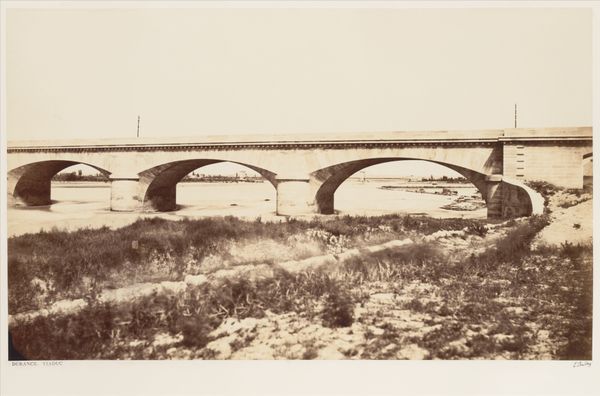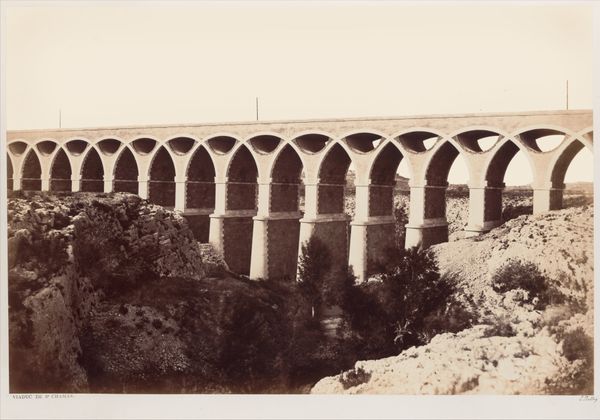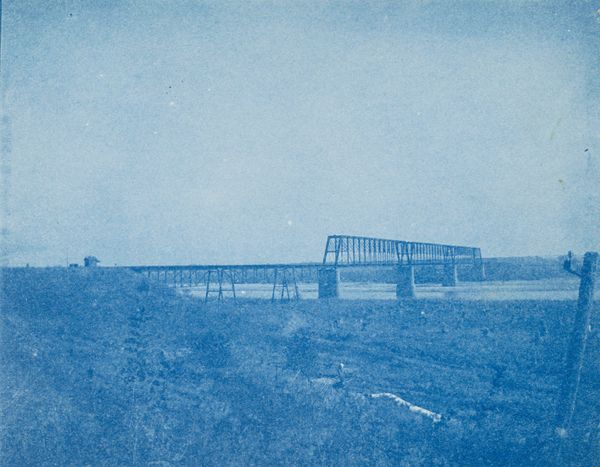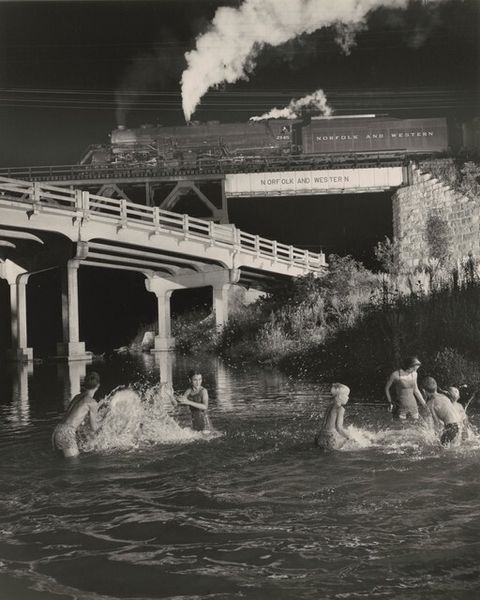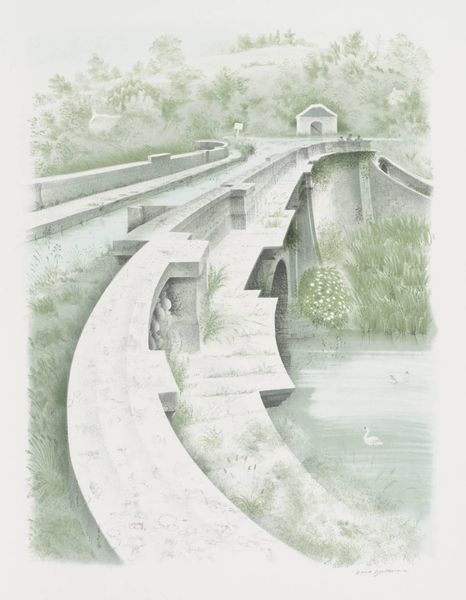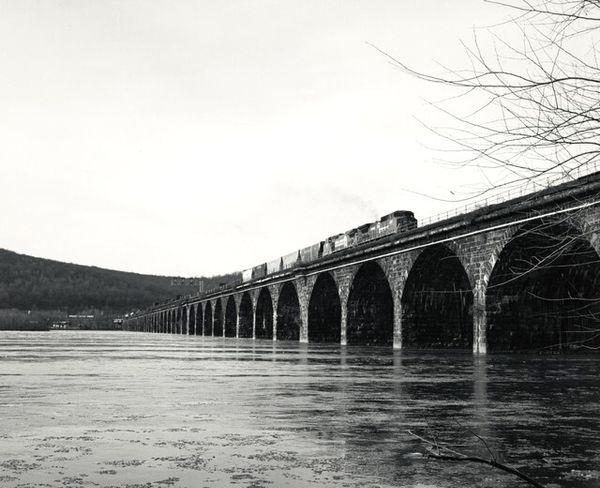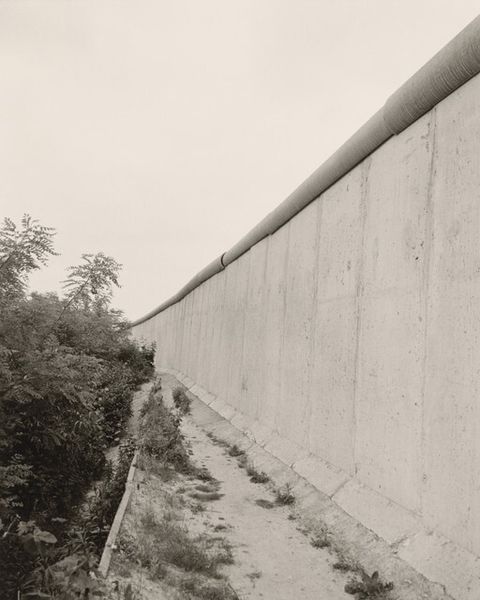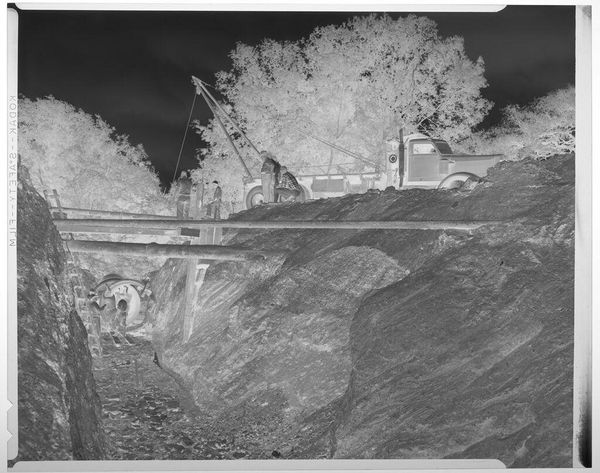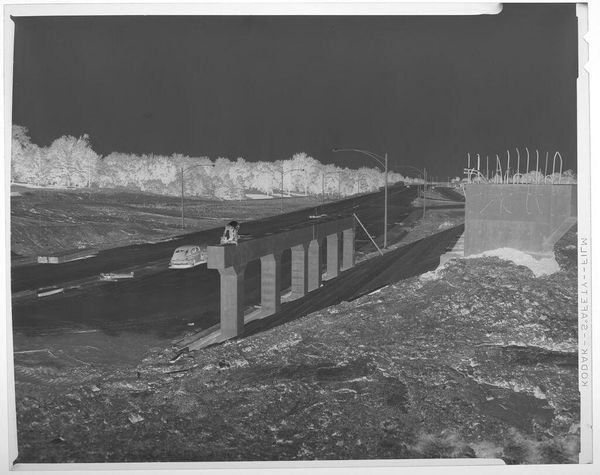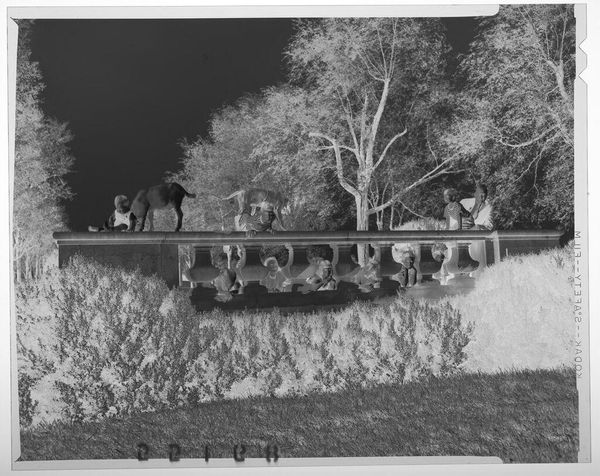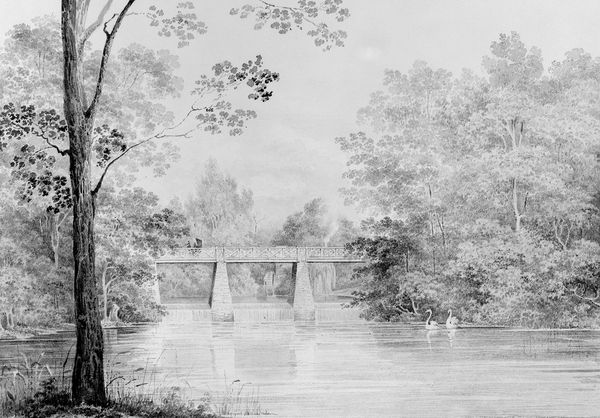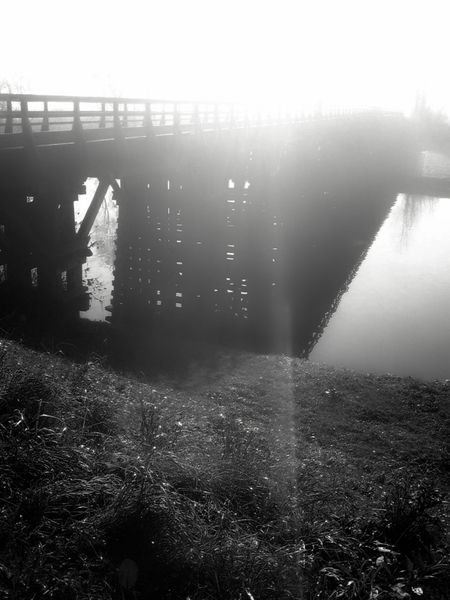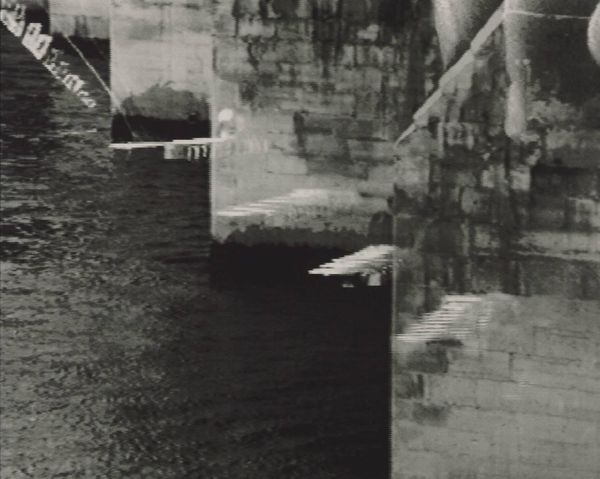
Bridge near Collector’s House, Shungavellor, India Possibly 1857 - 1858
0:00
0:00
daguerreotype, photography
#
sculpture
#
landscape
#
daguerreotype
#
photography
#
derelict
#
ancient-mediterranean
#
line
#
cityscape
#
realism
Dimensions: image/sheet: 26.3 × 40 cm (10 3/8 × 15 3/4 in.)
Copyright: National Gallery of Art: CC0 1.0
Curator: This photograph, possibly taken between 1857 and 1858, is by Linnaeus Tripe, entitled "Bridge near Collector's House, Shungavellor, India." The medium used here is a daguerreotype. Editor: It's haunting, almost ghostly. The arches repeating into the distance create a sense of receding space, and the mirroring in the water doubles the architectural presence. It is really an evocative image. Curator: The formal repetition of those arches definitely establishes a visual rhythm, a play of light and shadow that lends itself to an intriguing semiotic discussion. But, understanding the historical context is essential. This photograph speaks to the authority and infrastructure of the British East India Company, doesn’t it? A collector’s house signifies colonial administration and power structures imposing on the Indian landscape. Editor: True, and one could argue the bridge itself represents a sort of imposition, engineering literally spanning the natural world. I still get hung up on the structure. See how the symmetry, with its near-perfect reflection, seems to point at an intention to reflect ideals of permanence and order. Curator: Absolutely, the play of light emphasizes this feeling of balance and control, all colonial mechanisms in place. It also presents an aesthetic framing that distances the local population; no people visible, reinforcing an exclusionary narrative. Editor: Perhaps the exclusion also highlights the play between man-made order, with a bridge using lines, and nature that features plant overgrowth. Curator: Yes, nature persisting, perhaps reclaiming, right? Even in a picture attempting to capture civilization's dominance. It serves as an eloquent premonition of the end of empires and colonial exploitation. Editor: I see that so clearly now! Thinking just about forms originally made me blind to other meanings here. The visual composition, even in its attempt at stoic grandeur, quietly foreshadows later social unrest. Curator: Precisely! A study of photography, the social and historical is everything. These images stand as testaments to those in power while also providing a stage for recognizing social inequity. Editor: Looking more deeply allows the architecture itself to reveal complex histories about trade, dominion, the building of roads, and their place in an ecology undergoing alteration!
Comments
No comments
Be the first to comment and join the conversation on the ultimate creative platform.
